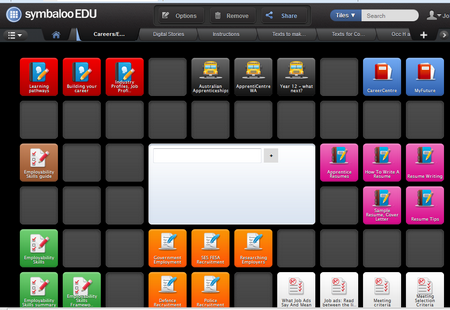Introduction
How do you manage all those links to websites that you come across every day? Even if you don’t currently use very much digital or web-based content in your teaching you probably visit websites for printable teaching resources. There are many printable resources available from websites as well as the truly digital content. I know I was accessing (and printing) masses of such material some years ago, well before my face-to-face students had any computer access in class.
Information curation
Keeping the links that you need and want while discarding those items that are not useful for you is a big problem that is continuing to increase. Information curation has become a major issue for many people. This is compounded by the fact that most of us now access work related links and content on more than one digital device. In my own case I need to be able to regularly access links from at least three different desktop computers, my laptop and my iPad. This excludes classrooms and any one-off situations such as workshops or conferences. Browser “Favourites” are no longer sufficient to keep all those links especially when they are still often lost during updates.
As a general bookmarking tool I mostly use Diigo an online application that enables me to save and tag links and also to share with others. However this is not ideal for sharing links with students as it isn’t very structured (at least mine isn’t) and in my opinion links are easier for students to work with if they are organised in some way.
Using SymbalooEdu with students
My preferred tool for managing links that I use with students is SymbalooEdu. This is easy to sign up to and easy to use. The pages (“Webmixes”) can also easily be made public and shared.

Symbaloo is very visual using coloured “tiles” to which you can add icons and titles. In Symbaloo I create what are known as “Webmixes” groups of links that relate to particular topics. I can then share the “Webmixes” with students to use in activities.
Advantages of using Symbaloo:
- enables me to give students a degree of ownership and choice in the links they access for activities;
- allows me some control so that I can ensure that students visit websites which provide appropriate examples related to the activity concerned and are likely to be comparativley “safe”;
- limits the websites students access for an activity (reduces the number I need to visit when evaluating work);
- provides scaffolding opportunities from which students can progress to become more independent
- I can use tile colour, page position and icon to provide clear navigation for students so that they can easily find the links they need;
- colour and page position can also be used for level differentiation so that I can use the same Webmix for an activity that spans several levels – this makes it easy if a student needs to access higher or lower level links to meet individual needs;
- I can give students access to the links they need for an activity without “cluttering” up their written instructions with a series of links in the text;
- if a link becomes inactive it is easy to remove or replace without having to modify and re-upload the activity itself;
- the visual nature of the tiles works well with literacy students.
This embedded Symbaloo page with groups related to career exploration and resume development is one I use online – the activity I use this with is similar at Certs I, II and III and, depending on standard of completion, it may provide evidence for aspects of units on Learning Plan and Portfolio, Creating and Engaging with texts (Personal and/or Learning).
Conclusion
SymbalooEdu works well as a tool for managing links that are shared with students, it is easy to update links and manages student access reducing risk to students and potential for lecturer overload.
Jo Hart






